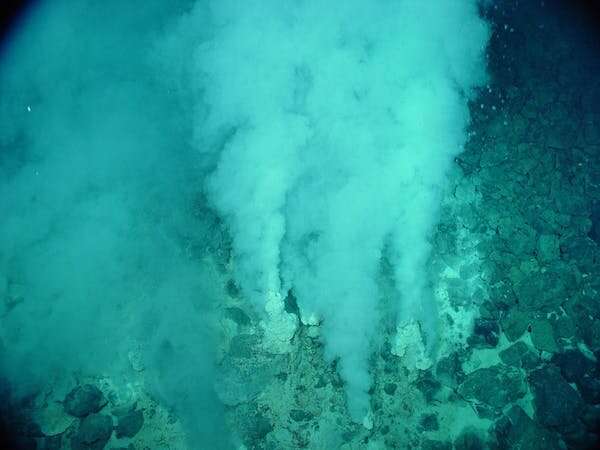This article has been reviewed according to Science X's editorial process and policies. Editors have highlighted the following attributes while ensuring the content's credibility:
fact-checked
trusted source
written by researcher(s)
proofread
Did life evolve more than once? Researchers are closing in on an answer

From its humble origin(s), life has infected the entire planet with endless beautiful forms. The genesis of life is the oldest biological event, so old that no clear evidence was left behind other than the existence of life itself. This leaves many questions open, and one of the most tantalizing is how many times life magically emerged from non-living elements.
Has all of life on Earth evolved only once, or are different living beings cut from different cloths? The question of how difficult it is for life to emerge is interesting—not least because it can shed some light on the likelihood of finding life on other planets.
The origin of life is a central question in modern biology, and probably the hardest to study. This event took place four billion years ago, and it happened at a molecular level—meaning little fossil evidence remains.
Many lively beginnings have been suggested, from unsavory primordial soups to outer space. But the current scientific consensus is that life emerged from non-living molecules in a natural process called abiogenesis, most likely in the darkness of deep-sea hydrothermal vents. But if life emerged once, why not more times?
What is abiogenesis?
Scientists have proposed various consecutive steps for abiogenesis. We know that Earth was rich in several chemicals, such as amino acids, a type of molecules called nucleotides or sugars, which are the building blocks of life. Laboratory experiments, such as the iconic Miller-Urey experiment, have shown how these compounds can be naturally formed under conditions similar to early Earth. Some of these compounds could also have come to Earth riding meteorites.
Next, these simple molecules combined to form more complex ones, such as fats, proteins or nucleic acids. Importantly, nucleic acids—such as double-stranded DNA or its single-stranded cousin RNA—can store the information needed to build other molecules. DNA is more stable than RNA, but in contrast, RNA can be part of chemical reactions in which a compound makes copies of itself—self-replication.
The "RNA world" hypothesis suggests that early life may have used RNA as material for both genes and replication before the emergence of DNA and proteins.
Once an information system can make copies of itself, natural selection kicks in. Some of the new copies of these molecules (which some would call "genes") will have errors, or mutations, and some of these new mutations will improve the replication ability of the molecules. Therefore, over time, there will be more copies of these mutants than other molecules, some of which will accumulate further new mutations making them even faster and more abundant, and so on.

Eventually, these molecules probably evolved a lipid (fatty) boundary separating the internal environment of the organism from the exterior, forming protocells. Protocells could concentrate and organize better the molecules needed in biochemical reactions, providing a contained and efficient metabolism.
Life on repeat?
Abiogenesis could have happened more than once. Earth could have birthed self-replicating molecules several times, and maybe early life for thousands or millions of years just consisted of a bunch of different self-replicating RNA molecules, with independent origins, competing for the same building blocks. Alas, due to the ancient and microscopic nature of this process, we may never know.
Many lab experiments have successfully reproduced different stages of abiogenesis, proving they could happen more than once, but we have no certainty of these occurring in the past.
A related question could be whether new life is emerging by abiogenesis as you are reading this. This is very unlikely though. Early Earth was sterile of life and the physical and chemical conditions were very different. Nowadays, if somewhere on the planet there were ideal conditions for new self-replicating molecules to appear, they would be promptly chomped by existing life.
What we do know is that all extant life beings descend from a single shared last universal common ancestor of life (also known as LUCA). If there were other ancestors, they left no descendants behind. Key pieces of evidence support the existence of LUCA. All life on Earth uses the same genetic code, namely the correspondence between nucleotides in DNA known as A, T, C, and G—and the amino acid they encode in proteins. For example, the sequence of the three nucleotides ATG always corresponds to the amino acid methionine.
Theoretically, however, there could have been more genetic code variants between species. But all life on Earth uses the same code with a few minor changes in some lineages. Biochemical pathways, such as the ones used to metabolize food, also support the existence of LUCA; many independent pathways could have evolved in different ancestors, yet some (such as the ones used to metabolize sugars) are shared across all living organisms. Similarly, hundreds of identical genes are present in disparate live beings which can only be explained by being inherited from LUCA.
My favorite support for LUCA comes from the Tree of Life. Independent analyses, some using anatomy, metabolism or genetic sequences, have revealed a hierarchical pattern of relatedness that can be represented as a tree. This shows we are more related to chimps than to any other living organisms on Earth. Chimps and we are more related to gorillas, and together to orangutans, and so on.
You can pick any random organism, from the lettuce in your salad to the bacteria in your bioactive yogurt and, if you travel back in time far enough, you will share an actual common ancestor. This is not a metaphor, but a scientific fact.
This is one of the most mind boggling concepts in science, Darwin's unity of life. If you are reading this text, you are here thanks to an uninterrupted chain of reproductive events going back billions of years. As exciting as it is to think about life repeatedly emerging on our planet, or elsewhere, it is even more exciting to know that we are related to all the life beings in the planet.
Provided by The Conversation
This article is republished from The Conversation under a Creative Commons license. Read the original article.![]()



















